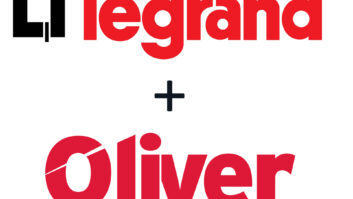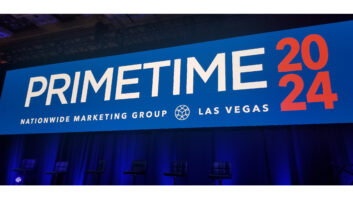I recently sat down with a senior media executive at an ad agency servicing one of the large national retailers. While talking about 2011 marketing objectives and the media plan, he started explaining that they were trying to broaden the goals of digital marketing to include more than bottom-of-the-funnel ecommerce transactions.
They now wanted to use the web site to drive consumers into the store.
Thus far, the retailer’s ecommerce division had essentially co-opted all digital marketing. Now, they wanted to split their digital marketing budget and, while still bottom-of-the-funnel focused, they wanted to address two funnels: the ecommerce shopping cart and the bricks and mortar check-out in the store.
I left the meeting thinking this retailer had a rather enlightened strategy.
But, the more I thought about it, it occurred to me the most noteworthy thing about the meeting wasn’t how enlightened this retailer had become; it is that digital marketing at most other retailers is too simplistic.
Most consumers use the Internet for online research prior to making a purchase these days. There are plenty of studies that support that conclusion and I’ve found that most people in the industry also know this intuitively from their own behavior and the behavior of family and friends.
At a recent meeting of OwnerIQ’s Retail and Manufacturer Advisory Board that included senior executives from top brands such as HP, Whirlpool and Nebraska Furniture Mart every executive clearly recognized and spoke about the new online path-to-purchase. Russ Minick, President of Electrolux Floor Care said that there is a “new consumer” walking into stores today. Russ meant that a typical in-store consumer has researched the product online and probably price shopped multiple retailers before venturing into the store. They are armed with a lot of information.
While the proportion of consumers researching online is high, we also know that the vast majority of transactions still take place in physical retail location. According to Forrester’s US Online Retail Forecast 2009-2014 published in March 2010, “web influenced” sales, (sales where the path-to-purchase was online prior to purchase) represent about half of all retail sales (46 percent in 2010. 53 percent by 2014). Yet, according to the same study, online retail sales are expected to be just 8 percent of total sales by 2014 (they’re about 7 percent today).
Even for categories that have gone to a majority of ecommerce sales, such as personal computers, only 54 percent of the transactions, occur online according to Forrester. For things like consumer electronics, the portion transacted online is about 16 percent and for apparel and shoes it is less than 10 percent.
You can easily see the same phenomena in the sales of the largest national retailers: online sales are dwarfed by their brick’s-and-mortar transactions. According to Internet Retailer, 0.75 perecnt of Home Depot’s sales take place online. BestBuy’s online sales are estimated to be 5 percent of total sales, while online sales at Target are estimated to be below 2 percent of total sales.
To put this into perspective, Home Depot’s entire estimated online commerce activity is the equivalent of about 17 of the more than 2,000 stores in its portfolio based on reported sales per square foot and average store size reported in their 2009 SEC filings.
BestBuy’s ecommerce platform generates about the equivalent of 62 stores of its 1,200 locations.
These ecommerce options are sizeable operations. BestBuy’s online store generates about $2.5 billion in annual sales according to Internet Retailer. But, BestBuy’s stores generate more than $47 billion in sales. This pattern is constant across all national retailers and even more pronounced for regional retailers.
Given that in-store sales are fully dependent on winning an online research and price comparison path-to-purchase, shouldn’t the mix of the digital marketing effort be overwhelmingly deployed toward supporting the most common shopping experience – research online and buy offline – rather than oriented toward the exception; research online, buy online?
It is easy to see why digital marketing budgets skew toward ecommerce objectives. The shift in the consumer path to purchase to include an overwhelming online portion is very real, but impossible to see in each transaction and hard to understand in aggregate. In fact, there are very few online metrics directly related to in-store purchase that can be used for benchmarking. What does a store manager in Atlanta do to win in the online path-to-purchase, and how does he know which of his efforts are successful?
Contrast the situation of the store manager with the agenda of an ecommerce team at headquarters. The ecommerce team has very real financial goals that can only be met online, and they can easily measure the outcome of their customer acquisition efforts using direct-response techniques.
The store manager has a much less tangible online agenda than the ecommerce group does, and the person with the clearer agenda usually wins the battle for resources. Consequently, the ecommerce divisions usually drive the budget and thinking on digital marketing.
Recall that Home Depot’s ecommerce platform is the equivalent of about 17 stores, or the number in a good sized DMA. So, if the ecommerce units drove the digital marketing agenda for the entire organization, it would be roughly akin to the stores in a larger DMA driving the marketing strategy for the entire organization.
Would it ever make sense for the Los Angeles stores of a large national retailer to control the entire local newspaper budget for the rest of the country? Yet, that is more or less what happens among retailers in digital all the time: a small portion of the business with a specific agenda drives the digital marketing strategy for the rest of the company, where a much different agenda should probably prevail.
The retailer CEO, CMO and merchants need to take responsibility for both recognizing the importance of the online path-to-purchase across all of their transactions – including in-store transactions – and ensuring that the digital marketing budget is not co-opted exclusively toward an ecommerce agenda.












